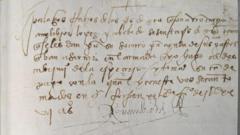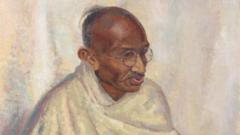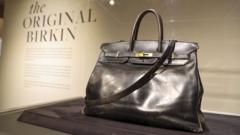A collection of sacred jewels and relics linked to Buddhism, taken from India during the colonial era, faces auctioning at Sotheby’s, challenging the ownership of culturally significant treasures.
India's Legal Battle to Reclaim Sacred Relics Ahead of Auction

India's Legal Battle to Reclaim Sacred Relics Ahead of Auction
India's government pushes back against the sale of culturally significant Buddhist relics, igniting a global conversation on cultural heritage rights.
The intricate jewels, presumed to have been buried with Buddha and excavated in 1898 during British rule in India, are now at the center of a legal confrontation. The collection, which includes bone and ash believed to belong to the revered figure, is set to be auctioned by the descendants of the British explorer who discovered these holy items. The Indian Ministry of Culture has intervened with an order demanding their return to India for preservation and reverence.
This situation raises profound questions concerning how nations handle artifacts obtained through colonial plunder. Ashley Thompson, a Southeast Asian art professor at the University of London, emphasizes the imperative of reassessing the ownership and valuation of culturally significant artwork: “Who do they belong to? What are they worth? Can they even be considered as commodities?”
The global context intensifies this debate as several countries reconsider their colonial legacies. Recent trends show improved efforts to return artifacts; American institutions are giving back to Indigenous tribes, while Dutch museums have repatriated artifacts to Nigeria, Sri Lanka, and other nations. Additionally, British museums have steadily returned looted items related to significant cultural practices, including Buddhism.
This case may become a turning point, pushing forward the conversation on cultural heritage rights and the repatriation of artifacts taken during periods of colonial expansion.
This situation raises profound questions concerning how nations handle artifacts obtained through colonial plunder. Ashley Thompson, a Southeast Asian art professor at the University of London, emphasizes the imperative of reassessing the ownership and valuation of culturally significant artwork: “Who do they belong to? What are they worth? Can they even be considered as commodities?”
The global context intensifies this debate as several countries reconsider their colonial legacies. Recent trends show improved efforts to return artifacts; American institutions are giving back to Indigenous tribes, while Dutch museums have repatriated artifacts to Nigeria, Sri Lanka, and other nations. Additionally, British museums have steadily returned looted items related to significant cultural practices, including Buddhism.
This case may become a turning point, pushing forward the conversation on cultural heritage rights and the repatriation of artifacts taken during periods of colonial expansion.

















